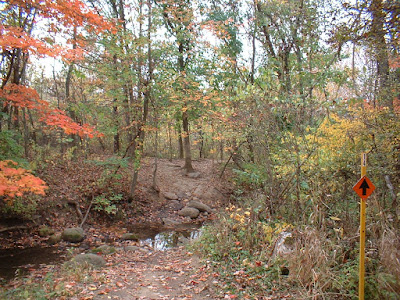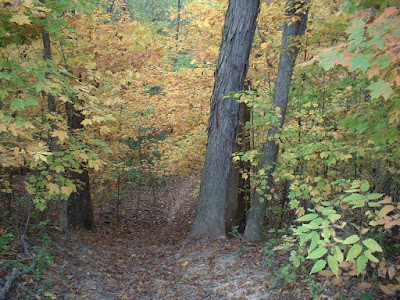For 2008 the Subaru-Gary Fisher team is returning the core of its team including Olympic hopefuls Jeremy Horgan-Kobelski, Willow Koerber, and Heather Irmiger. However, the biggest resigning during the off-season was that of title sponsor, Subaru. Subaru is continuing its commitment to mountain biking with a three-year deal that will ensure the continuation of the
most successful mountain bike team in America through 2010.
The 2008 team will consist of Jeremy Horgan-Kobelski, Willow Koerber, Heather Irmiger, Sam Schultz, Nat Ross, Jenny Copnall, Ken Onodera, Asa Erlandsson, and Dror Pekatch. This past year Jeremy Horgan-Kobelski captured another first place cross country finish at Deer Valley, UT. Willow Koerber stood on two World Cup podiums and five domestic podiums while
finishing the season as the top ranked American woman in the World Cup rankings. Nat Ross pulled in the overall National Point Series endurance title for the second year in the row. Heather Irmiger pulled in three domestic podiums.
In 2007 the team was racing for their country to secure the maximum number of Olympic roster spots for the U.S. For 2008, the Subaru-Gary Fisher riders will be focused on securing UCI race
points to earn their individual Olympic berth. Both Jeremy Horgan-Kobelski and Willow Koerber ended 2007 in prime positions to capture U.S. Olympic roster spots and participated in the test race on the Beijing Olympic course.
A critical element of any team is the sponsors. Subaru of America returns for their eighth year as title sponsor. SRAM, RockShox, Avid, Bontrager, Crank Brothers, Stronglight, and Genuine Innovations equip the team bikes. GU Energy Gel and GU20 Sports Drink will be fueling the team. 661 provides gloves and protective gear. Pedros helps to keep the bikes clean and lubed.
Brave Solider helps with trail rash and skincare. Cane Creek will be providing headsets for the team. Shimano Footwear, Sara Sportline cycling socks and Curve baselayers outfit the riders. Light and Motion will be keeping the trail lit at night. And Yakima equips all of the team’s Subarus
with racks.
The 2008 Subaru-Gary Fisher team has two categories: National Team and Global Team. The National Team will race largely in North America with a focus on the NMBS events, World Cups, premier domestic events, and select international races. Jeremy Horgan-Kobelski ,JHK is the most prolific American mountain bike racer of the last decade. He is a 4 time
National Champion. In 2007, JHK was fourth in the overall National Mountain Bike Series and also finished second overall American in the World Cup series. His resume also includes three short track National Championships. Before turning pro in 2000 he was 4-time Collegiate National Champion and 2-time Collegiate Cyclist of the Year. He enters the 2008
season anxious to race his way into his second trip to the Olympics.
Willow is one of the most recognizable professionals in mountain biking. Over her years as a professional she has built a solid fan base because of her refined style, approachability and winning ways. Willow first appeared on the national scene while racing at the collegiate level, where she won three Collegiate National Championships. In 2007, Willow stepped up her game and had a breakout year. She scored two World Cup podiums and finished as the topranked American in the World Cup series. Given her strong World Cup finish, Willow is poised to claim one of the two US women Olympic spots. 2007 saw Heather solidify herself as one of the top American female racers. She finished fourth overall in the NMBS cross-count series and fifth overall in the short track series. This included a third place finish in Snowmass, CO, NMBS race. For 2008 the former Collegiate
National Champion will be racing the NMBS events and World Cup races in hopes of scoring a US Olympic berth. .
As a former US Under 23 National Champion, Sam looks to garner more podium appearances now that he has graduated to the elites and continues his rise within the American mountain biking scene. A 2007 highlight for Sam was being a member of the bronze metal USA relay team at the Mountain Bike World Championships. The Missoula, MT, native lives and trains in Colorado Springs. In 2007, he finished 11th overall on the NMBS XC Series.
2007 was a full and successful year for the longest standing member of the Subaru-Gary Fisher team. The endurance rider was the 2007 Ultra-Endurance Series champion. He bested long-time rival Tinker Juarez to earn the distinction. In between his epic rides and 24 hour races Nat found time to compete in Race Across America (RAAM) for the second
consecutive year. His consistent podium finishes along with his affable personality have made Nat a crowd favorite wherever he travels. For 2008, the Colorado native will continue to focus on the endurance races and repeating as the Series leader. Athletes on the Global Team will join the team at select events. Subaru-Gary Fisher strives to work with athletes from around the world as they make their way to the top of the sport.
Jenny returns to Subaru-Gary Fisher for her fifth season. She dominates the UK women’s mountain bike scene. She is the defending UK Champion for both cross-country and marathon. In 2007, Jenny finished second in British National Series after four consecutive years of sitting on top. She has raced since 1996 and has steadily progressed to her current place on one of the World’s top teams. Jenny will continue to race an aggressive schedule in her native UK and compete in select World Cup events.
Ken Onodera, the 22-year old professional from Japan is two time All Japan National Champion and winner of the All Asia Championship in 2004. Ken has a very easy going attitude which belies his speed and aggression when racing his bike.
Asa Erlandsson has raced for Gary Fisher Bicycles for the last five years, competing in cross country and marathon events. The Swedish native is the 2007 Nordic marathon and Swedish marathon series Champion. In 2008 she’ll be focused once again balancing her marathon races with
select international races after having finished 13th at Marathon Worlds, 2nd at
Roc D’Azur, and 2 top-10s at Marathon World Cups.
Dror Pekatch is one of Israel’s most successful international mountain bike professionals. He has consistently represented Gary Fisher well on the race course and been a tireless ambassador and organizer for the mountain biking in Israel.
The Subaru-Gary Fisher MTB Team is proud to be sponsored by:
Subaru of America, Inc, Gary Fisher Bicycles, SRAM , RockShox, Bontrager Wheelworks and Components, Avid Brakes, Bontrager tires, Crank Brothers pedals, 661 gloves, Tokyo Joe's, Stronglight chainrings, Light & Motion, Pedros, Genuine Innovations, Brave Soldier, Yakima, Mountainsmith, Cane Creek, Shimano footwear, Sara Sportline Cycling Socks, GU Energy Gel, GU20 Sports Drink, and Curve baselayers.
In the storied history of Gary Fisher Bikes, our racing team has had its share of success. But don’t get us wrong, there’s more to our team than getting muddy, winning races, and popping open cold bottles of the bubbly stuff. They’ve been a key sounding board for Gary’s thoughts, ideas, and latest mad inklings. And who better to test new bikes than the best riders in the world?
Subaru and Gary Fisher also support the International Mountain Bike Association. IMBA creates, enhances and preserves trail opportunities for mountain bikers worldwide.






















